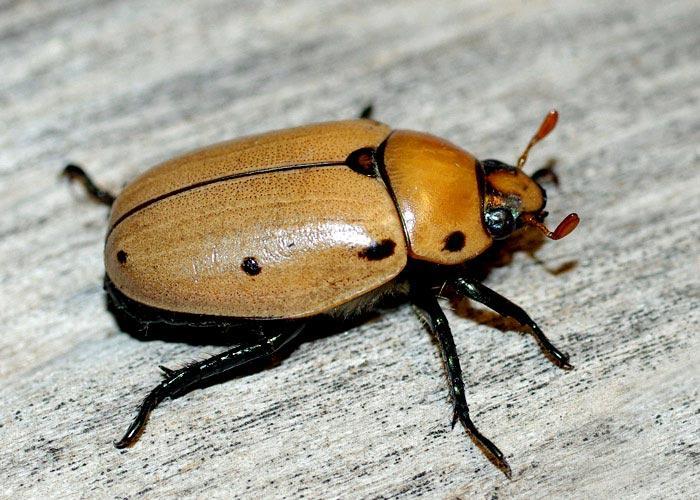Colorado Potato Beetle (Leptinotarsa decemlineata)
Updated on
17/11/2022The Colorado potato beetle is the most serious pest of potato crops. Their damage can significantly reduce agricultural yield and even kill potato plants. It also goes by the names Colorado beetle, ten-striped spearman, and ten-lined potato beetle.
Scientific Classification
- Class:Insecta
- Order:Coleoptera
- Family:Chrysomelidae
- Genus:Leptinotarsa
- Species:L. decemlineata
Conservation Status
Description
The body color of the Colorado potato beetle is bright yellow or orange with ten bold brown stripes running down its elytra (wing cases). Hence its specific name, decemlineata, meaning ten-lined. The length of the beetle is in the range of 0.24-0.43 in (6-11 mm), and its width is around 0.12 in (3 mm). Its weight is 50-170 mg.
Distribution: The insect is endemic to the Rocky Mountains. It spread to Europe and America from 1859 onwards. It also has a wide distribution in Asia.
Habitat: Host plants like tomato, pepper, nightshades, buffalo-burs, and eggplants in commercial fields and home gardens.
Do They Bite/Sting: Yes.
Lifespan: 2-12 months.
Predators: Spiders, ground beetles, ladybugs, shield bugs, wasps, lacewings, and damsel bugs.
Behavior and Characteristics
Diet
The Colorado potato beetle has a strong association with plants of the family Solanaceae, particularly those of the genus Solanum. It is commonly found in buffalo-bur, eggplant or aubergine, black nightshade, hairy nightshade, bittersweet nightshade, potato, silverleaf nightshade, tomato, and capsicum.
Life Cycle
1. Egg Stage
Over 500 eggs are laid in 4-5 weeks. They are deposited in batches of 30 on the undersides of the host leaves. Each yellow-orange egg is 0.039 in (1mm) in size. They hatch into larvae in 4-15 days.
2. Larva Stage
The orange-pink larvae have big 9-segmented abdomens, prominent spiracles, and black heads. They measure up to 0.59 in (15 mm) in their final instar. In the 1st and 2nd instars, the pronotum (dorsal plate of the prothorax) is black; in the 3rd instar, it has an orange-brown border; and in the 4th and final one, half of the pronotum is light brown. The head remains black throughout.
They feed on the leaves of the host plants, except in the several days of their prepupal stage in the last instar when they don’t feed. They are inactive and lighter colored during that time.
3. Pupa Stage
The prepupae drop on the soil and burrow to several inches depth before pupating.
4. Adult Stage
The adult beetle emerges in 5-10 days. Depending upon the light, temperature, and host quality, the adults may enter diapause and delay their emergence till spring. The overwintering adults can mate after 24 hours of emerging in spring. They return to the host plants for feeding. The insect changes from an egg to an adult in 21 days. 3 or more generations occur in a growing season.
Getting Rid of Colorado Potato Beetles
Chemical pesticides are the most common control measure against the beetle that causes extensive damage and defoliation of host crops. But since it has developed resistance against the major ones, non-insecticidal control, like inhibiting its feeding with fungicides and applying chemicals that repel the pest, can prove to be more effective. Biological insecticides also work. The larvae can be killed by bacterial insecticides.
FAQs
No, they are not poisonous to humans. But they are not entirely safe as animals refuse to eat them. It could be because they are harmful to them or do not taste good. Their bright colors could be an indication of their unpalatable nature.
Yes, they do. The adults can fly several miles in search of their hosts.















